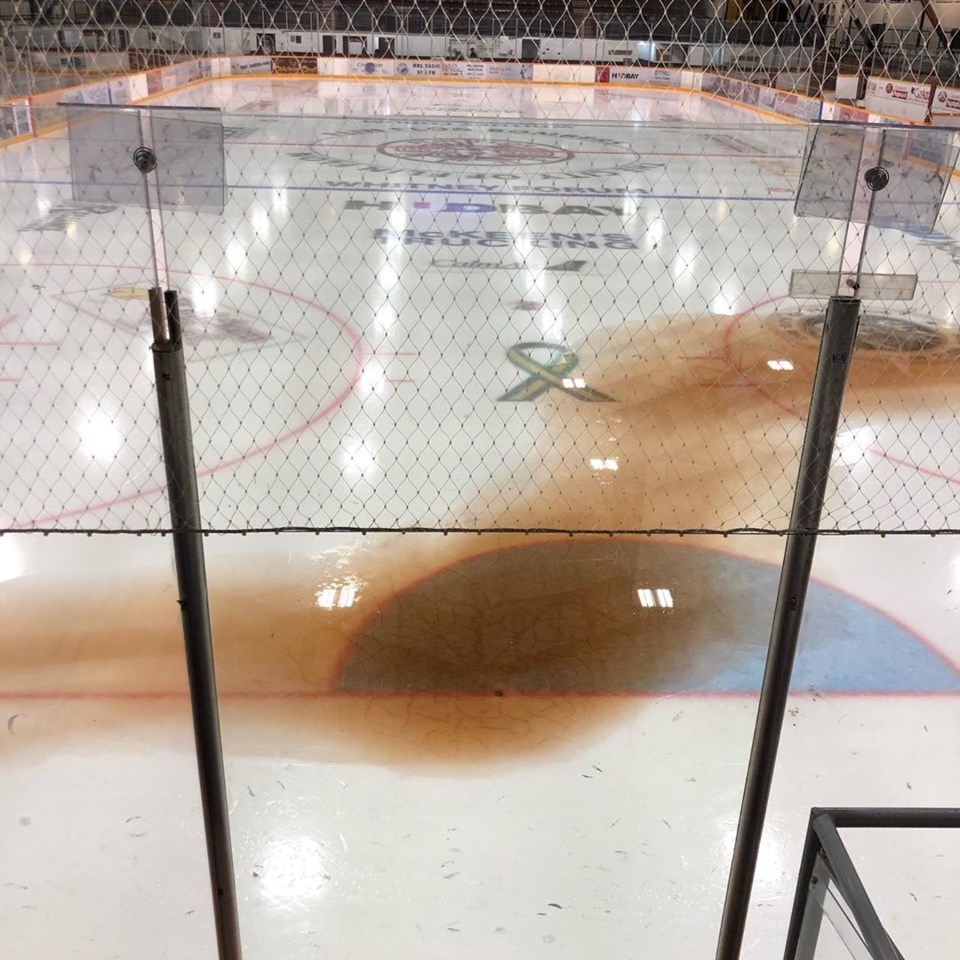Some quick work by City of Flin Flon employees will have the Whitney Forum back in action soon after a brine pipe leak destroyed a portion of the ice surface Saturday.
A line underneath the ice surface carrying chiller brine was punctured during preparations for the Flin Flon Bombers’ scheduled preseason game against the OCN Blizzard Sept. 7, causing dozens of litres of brine fluid to leak out onto the ice.
The issue was a lot more than just cleaning up the fluid – in order to fully stop the leak, workers needed to remove a portion of ice, then dig out the concrete and material underneath the surface to access the broken line.
“We had to take the ice right out, we had to chip out concrete and repair the brine lines underneath the concrete. Now, it’s just getting that ice layer back up to where it was,” said Leslie Taylor, maintenance coordinator for the City of Flin Flon. Taylor supervised the crew working on the leak.
“I’m pretty sure tomorrow (Sept. 10), we’ll be back up and running.”
After accessing the pipe and fixing the leak, workers replaced the concrete in the affected area with a mixture of sand and water. It’s a temporary fix, but one that should work until the end of the season.
“Next summer, what we’ll have to do is pull up the other three plates and make sure the little round pipe is not close to a brine line or that it’s not broken. We’ll have to recement the other one - right now, it’s just sand,” said Taylor.
Brine lines are part of the refrigeration system used to keep a hockey ice surface solid. The lines are located beneath both the ice surface and the concrete pad below. Inside the pipes, a liquid refrigerant absorbs heat from the brine, then pulling heat out of the concrete floor.
Taylor said the incident happened after someone drilled into the line by mistake while preparing a mooring location for a net before the Bombers-Blizzard game, adding the pipe was likely already leaking.
“It was likely like that for years, just on the cusp of breaking,” he said.
“What they have is almost like a little round bar inside the ice that’s supposed to guide the drill bit so you could drill in the post, then they’ve got a plate on top of the concrete. What happened was, over the years, the hole was sitting right on top of a brine line. They were really close to that line every time they drilled. I guess the concrete must have broken on the sides when they were drilling and it nicked that line enough that it broke through.”
Despite the incident, Taylor said the situation went as smoothly as such a leak could. The source was easily isolated.
“Let’s put it this way - it is one of the worst things that could happen to the ice, but lucky for us, there was a cause. If it just came up through the ice, that’s a major issue because you don’t know where that is. Here, it was caused by drilling holes that we’ve done a million times. We knew exactly where the leak was, it was just a matter of getting to it – which is under an inch and a half of ice and an inch of concrete under that.”




